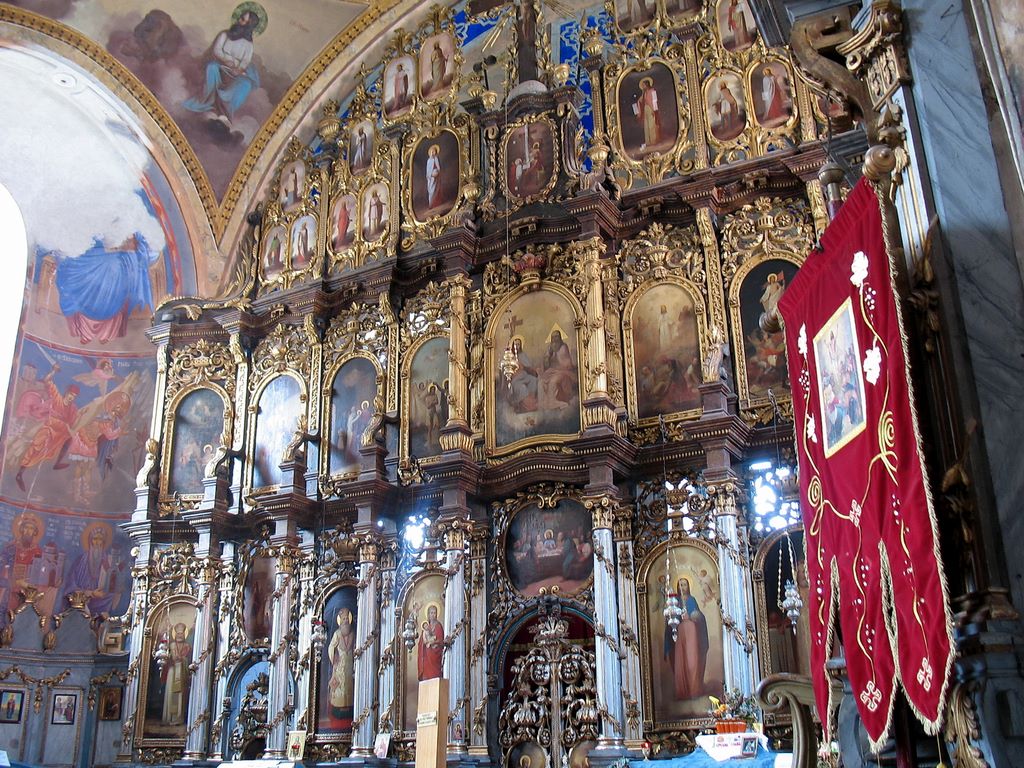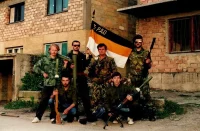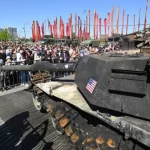The Cult from 1690 until 1800
Between the fall of the Serbian lands under the Ottoman lordship in the mid-15th c. and the First Serbian Uprising against the Turks at the beginning of the 19th c. (1804−1813),[i] the 1690 First Great Serbian Migration was the crucial historical event in the history of the Serbs. The immediate outcome of the Migration was a change of the ethnic structure of the lands south and north from the Rivers of Sava and Danube. During this migration, as a result of the Ottoman counter-offensive against the Austrian army,[ii] at least 70.000 immigrants (according to some historians even c. 100.000) passed the River Sava and settled mainly the lands of South Hungary (this part of historical Hungary became after 1918 part of Serbia under the name Vojvodina).[iii] Written privileges for the Serbs given by the Habsburg Emperors, who were at the same time and the Hungarian Kings, provided and guaranteed them freedom of the faith, church’s autonomy and the right to elect their own local administrative authorities. Along with a common language, faith and habits, the Serbian immigrants within the Habsburg Empire were linked to each other from the national point of view and by a strong tradition with regard to the same origins and history. In the process of a national gathering of the Serbs in the Habsburg Monarchy, but also and in linking them with the Serbs south from the River Sava, Prince Lazar’s cult had one of the most important roles. In fact, revival, new spreading and firming of the cult of St. Prince Lazar was one of the crucial points in the process of making national awareness among the Serbs in all three foreign countries where they were living: the Ottoman Empire, the Habsburg Monarchy and the Republic of Venice. In this process, an autonomous Serbian Church in the Habsburg Monarchy (the Metropolitanate of Karlovci) played the most important role.

During the Great Viennese War (1683−1699) between the Christian Alliance and the Ottoman Turks,[iv] in 1690 the fraternity of the monastery of Lazar’s Ravanica in Central Serbia left their monastery. Altogether with other monastery valuables which the monks took with them before they left the monastery the relics of Prince Lazar were taken too and transferred to the town of Saint Andrea near Budapest in Hungary. In fact, it was the second transfer of Prince Lazar’s relics, which actually marked at the same time and the revival of his cult among the Serbs. Lazar relics, after fraternity of the monastery of Serbia’s Ravanica, came to Saint Andrea, were preserved in the newly built wooden church named also Ravanica.[v] Saint Andrea at that time was temporary headquarters of the Serbian Orthodox Church with the Patriarch Arsenije III Čarnojević (Crnojević) who led the 1690 Serbian migration from Kosovo-Metochia and Central Serbia to Hungary.
In May 1692, the Austrian Emperor and the Hungarian King Leopold I (1658−1705) confirmed the possessions to the church of new Ravanica (in Hungary) and also put this church under the imperial protection. At the same year, one small delegation of this church went to Moscow with icons of “Kosovo’s great martyr” as the presents. They succeeded to get a charter from the Russian Emperors Ivan and Petar Aleksejevich according to which, the fraternity of Ravanica had a right to collect donations in Russia every seventh year for Lazar’s endowment. It is important to notice that in this charter, which was issued in 1693, Prince Lazar of Serbia was mentioned as the saint by the Russian Emperors. Thus, the new memorial place of Prince Lazar in Hungary was completely identified with ancient one in Central Serbia through the cult of “Kosovo’s great martyr”. This delegation from the church of Ravanica in Hungary passing through the Polish-Lithuanian Commonwealth (the Republic of Two Nations)[vi] during their return trip to Saint Andrea received new donations for the endorsement of St. Prince Lazar. This delegation probably visited and the Polish-Lithuanian court.[vii] From that time it is also a wooden tablet (18,5 x 28,5 cm.) with the portrait of Prince Lazar, but as keфaлoфoр (a person who is keeping in hands his own head)[viii] and a pilgrim.[ix] The typography was obviously well-known for the fraternity of Ravanica. At such a way they could spread the cult cheaply and firm it among the bigger number of believers.
The relics of Prince Lazar have been for the third time transferred to the new place in 1697 when the fraternity of Saint Andrea’s Ravanica moved to Mt. Fruška Gora in Srem (today in North Serbia, but at that time it was South Hungary). Here the fraternity found an abandoned monastery of Vrdnik which was now restored and renamed into the Small Ravanica (Мала Раваница). In historical sources, those two names are identified through Lazar’s cult. However, during the next Austrian-Turkish war (1716−1718) the relics were again transferred to the new place − to the monastery of Futog as well as in Mt. Fruška Gora (the so-called Serbian Athos). Nevertheless, after this new transfer, the relics were returned back to Small Ravanica (Vrdnik). Gradually, in the course of time, a tradition that Prince Lazar established the monastery of Vrdnik was created. However, in the mid of the 18th c. believers, this tradition became a true story. This wrong tradition became a foundation for the Serbian folk song the Building of Ravanica.
With a restoration of both monastery of Vrdnik at the end of the 17th c. and the beginning of the 18th c. and the ancient monastery of Ravanica in Central Serbia after the Passarowitz (Пожаревац) Peace Agreement between the Habsburg Monarchy and the Ottoman Empire in 1718 there were established proper conditions for a spreading of the cult on the wider territory − northwards and southwards from the Rivers Danube and Sava.[x] The Vrdnik monastery, in fact, became a center of the cult in the Habsburg Monarchy while the original Ravanica monastery in Central Serbia had the same role within the Ottoman Empire. However, the Monastery of Vrdnik in Hungary became more important in comparison with the Monastery of Ravanica in Central Serbia with regard to a spreading of the cult for the very reason that in Vrdnik the relics of “Kosovo’s great martyr” were saved till the beginning of the Second World War.
Prince Lazar’s popularity was rapidly growing up in the 18th c. It can be traced in the fine arts as the best example of this fact. For instance, a portrait of Prince Lazar was presented on two reliquaries in the monasteries of Krušedol and Vrdnik in South Hungary (today in Serbia). In the mid-18th c. a portrait of Prince Lazar was wall-painted in Krušedol along with the portraits of the Nemanjić’s, the Branković’s and Jovan Vladimir.[xi] Further, in Moscow, two woodcuts were made in 1757 and 1758 for the monastery of Chilandar in North Greece at Mt. Athos and for the monastery of Studenica in South Serbia. On both of them, Prince Lazar was presented together with the members of the holy Nemanjić’s dynasty. On Studenica’s woodcut, the saint great Prince Lazar keeps a model of the church in his hands. A portrait of Prince Lazar can be seen as well as on the copper tablet which was donated by Mojsej Lukić from Novi Sad to the monastery of Piva in 1766.

The main part of Prince Lazar’s portraits in the 18th c. was made on the copper tablets. After the Second Great Serbian Migration from Serbia to Hungary in 1737, Prince Lazar was pictured as the keфaлoфop which was one of the special motives of the Serbian fine arts in the 18th c. The Serbian Patriarch Arsenije IV Jovanović-Šakabenda, who was a national leader during the Second Great Serbian Migration in 1737 to the Habsburg Monarchy, commissioned a copper tablet in 1741 to Christofor Žefarović and Toma Mesmer. This cooper tablet was used for the making of a special religious-political poster. This poster was sent to the Viennese court as a memorandum after the 1737 Second Great Serbian Migration. The name of this poster was: Saint Sava with the Serbian saints of the home of the Nemanjić’s. However, several important members of this dynasty are excluded from the poster. At this cooper tablet, Prince Lazar is presented as the keфaлoфop.[xii] In the same year, it was made by the same authors the Stematography that was, in fact, the first Serbian illustrated history and some kind of a schoolbook. Among 29 persons from the South Slavic lands, two of them are specially mentioned: Jovan Vladimir and Prince Lazar. Both of them are presented as the keфaлoфop-s.[xiii] Among several other Prince Lazar’s portraits, the next two are of special importance. First of them, which is not preserved in the original version, is a woodcut with Prince Lazar in a parade uniform. It is made by Christofor Žefarović in 1746. There is an opinion that the second one, a woodcut that is made by Zaharije Orfelin in 1773 is completely the same as the first one.[xiv]
Conclusion
The cult’s writings upon Prince Lazar contain a number of facts relevant to the post-Kosovo Battle period of the Balkan history, above all concerning the ideology of the rulers and the state, the history of culture, religion and ethnic relations. The mission of these writings did not end with the canonization of Prince Lazar. They preserved and spread the cult of the martyr of Kosovo far outside the borders of the former state ruled by Prince Lazar. What is the most important to say is that the cult of Prince Lazar as “Kosovo’s great martyr” played for centuries together with the “Kosovo’s Legend” and “Kosovo’s Myth” a crucial role in national identification of the Serbs that is valid today as well.
Reposts are welcomed with the reference to ORIENTAL REVIEW.
Endnotes:
[i] On the First Serbian Uprising against the Ottoman authority, see in [Р. М. Ђорђевић, Србија у устанку 1804−1813., Београд: Рад, 1979].
[ii] П. Рокаи, З. Ђере, Т. Пал, А. Касаш, Историја Мађара, Београд: CLIO, 2002, 302.
[iii] D. J. Popović, Velika seoba Srba 1690., Beograd, 1954, 32−51.
[iv] About this war, see in [Ж. Димић, Велики Бечки рат и Карловачки мир, Београд: VERZALpress, 1999].
[v] V. Petković, Manastir Ravanica, Beograd, 1922, 12.
[vi] S. Samalavičius, An Outline of Lithuanian History, Vilnius: Diemedis leidykla, 1995, 63−64.
[vii] St. M. Dimitrijević, “Građa za srpsku istoriju iz ruskih arhiva i biblioteka”, Spomenik SKA, LIII, Beograd, 1922, 213−218.
[viii] During the 1389 Battle of Kosovo, Prince Lazar was captured by the Ottomans and beheaded.
[ix] D. Davidov, Srpska grafika XVIII veka, Novi Sad, 1978, 245−246.
[x] One of the consequences of the geopolitical situation in the 18th-century Balkans was the Islamization of the region especially of Kosovo-Metochia [G. Castellan, History of the Balkans from Mohammed the Conqueror to Stalin, New York: Columbia University Press, 1992, 201].
[xi] D. Medaković, “Zidno slikarstvo manastira Krušedola”, Zbornik Filozofskog fakulteta u Beogradu, XVIII−2, Beograd, 1964, 601−616.
[xii] D. Davidov, Srpska grafika XVIII veka, Novi Sad, 1978, 354−371.
[xiii] D. Davidov, Stematografija, izobraženije oružaj iliričeskih, Novi Sad, 1972, 8−9.
[xiv] D. Davidov, Srpska grafika XVIII veka, Novi Sad, 1978, 135−137.














It’s unbelievable how you serbs still continue in the XXI century to spread and use this serb myths of the XIX century. Myths invented and used to justify the invasion of Albanian lands including Kosova and the extermination of the Albanian nation. Even in a biased source like Wikipedia, totally controlled by serb net-warriors, you can read this:
“According to Noel Malcolm, data that state that 37,000 families participated in this migration derive from a single source: a Serbian monastic chronicle which was written many years after the event and contains several other errors.[15]”
Yes, what’s the story with this single source written many years after the so-called migration of serbs and with several errors?
The modern serb scholars, those that can be barely accepted as such (and here i am not referring to this charlatan who spit around), don’t accept anymore this ridiculous serb myth.
That some people followed the Austrian army and were allowed to settle in Hungary is a historical fact that cannot be denied. Yet no historical documents are available regarding the number of people who emigrated, nor the exact areas affected by this emigration. The figure of 37 000 families,i.e., about 350 000 people, claimed by some historians, cannot be supported by any indisputable nor plausible evidence. This figure is, as it seems, the result of the arbitrary interpretation of the word void mentioned in some church document.
The appeal to the Balkan peoples to rise against the Turks was not merely made by the Patriarch Arsenije Crnojevic, but jointly by him and the Albanian Archbishop of Shkup (Skopje), Pjetër Bogdani. According to documents, there were about 20 000 rebels, Serbs and Albanians, and only some of them(including also some Muslim Albanians, not only Christians) emigrated north of the Danube. This figure does not tally with that claimed by the Serbs. The Ottomans offered amnesty, but this amnesty was not accepted by Orthodox Serb Church, not because they had any serious problem with Ottomans, absolutely no(for example, Belgrade once an Southern Hungarian city becomes capital of Serbia thanks to Ottomans, but this is another story and i hope we will find some time to talk in the future), but because the real enemy of this Church(Serb Church), was exactly an another Orthodox Church, The Patriarchate of Istanbul. For this reason the Orthodox Serb Church decided to migrated in Austrian territory because they got from the Emperor basically the same position that the Patriarchate of Istanbul had in Ottoman Empire (and later you betrayed them by killing the Archiduke Ferdinand and starting that bloodbath called WWI). The majority of the common people in today territory of Kosova and South Serbia accepted the amnesty and continued their life.
The historical error concerning various aspects of this emigration and the faulty interpretation of the word void used in church documents were already pointed out by a Serb himself – the well-known historian J. Tomic, in a passage which, surprisingly, has not received the attention it deserves from some western historians and the Anonymous author/s of Wikipedia and of course of this “great scholar” named Sotiroviç, considering the fact that it dates from 1913. It is contained in:
Les Albanais en Vieille-Serbie et dans le Sandjak de Novi-bazar, Paris, Hachette, 1913.
“This retreat of the southern and south-eastern population toward the north is known in Serbian history as the emigration of the Serbian people to Hungary under the Patriarch Arsenije Crnojevic. This event has lead in some instances to a few errors which for more than a century and a half, have been repeated from one book to another. One of those errors concerns the very regions that were hit by this emigration. If one opens at random any history book of the Serbian people one never fails to read everywhere as if it were a firmly established fact that during this emigration the Serbian regions of the Southwest – i.e., the regions of Prizren, Djakovo, Ipek – were the ones that suffered the most and remained vacant. This claim is incorrect and must be amended once and forever. Indeed, when presented in this manner the facts do not correspond to the reality. If this historical error has persisted for so long it is because the question has not been sufficiently studied. One has relied on notes and chronicles written by Orthodox priests and the ‘void’ mentioned in them has been identified with the ruin of the Serbian people; in reality, it refers to Orthodoxy.”
Indeed, it’s time for you Sotiroviç and others like you, once and forever to stop spreading this crap around the forums and other mediums.
P. S.
The Battle of Kosova against the Ottomans was not Serbs against Turks, but people from Balkans, including many Albanians (read Muzaka memories) against Turks. And was a Serb, Brankoviç who betrayed the Christian Army and joined the Ottomans.
BTW, why in some Ottoman sources this so-called Princ Lazar is called son of the Vlach, any idea? And if his name was Lazar, what about his surname, what the historical sources say? It’s an enigma. Meanwhile we know for example that the next day that this enigmatic Prince was killed, his daughter joined the harem of the Sultan Bayezid and his sons used to pay visits to their brother in law, normally family unions. Later one of them (the son of Prince Lazar) was killed along with other Serbian lords like Prince Marko(according to Muzaka he was a Bulgarian, what’s the story?), fighting like lions, side by side with Ottomans against a Vlach army.
Yes, i will find some time in the future to discuss about your glorious history.
To Laberia
You are typical pro-Albanian falsificator of Balkan history! Only two remarks:
Kosovo Battle was Serbian not Balkan against the Ottomans regardless on the fact that some minor non-Serbian forces took participation in it.
Vuk Brankovic did not betray Serbian army as it was Bosnian Vlatko Vukovic in fact! Etc.
You Albanian falsificators are still living in 18-th century “historiography” time.